The Tabula Sapiens: A multiple-organ, single-cell transcriptomic atlas of humans
- PMID: 35549404
- PMCID: PMC9812260
- DOI: 10.1126/science.abl4896
The Tabula Sapiens: A multiple-organ, single-cell transcriptomic atlas of humans
Abstract
Molecular characterization of cell types using single-cell transcriptome sequencing is revolutionizing cell biology and enabling new insights into the physiology of human organs. We created a human reference atlas comprising nearly 500,000 cells from 24 different tissues and organs, many from the same donor. This atlas enabled molecular characterization of more than 400 cell types, their distribution across tissues, and tissue-specific variation in gene expression. Using multiple tissues from a single donor enabled identification of the clonal distribution of T cells between tissues, identification of the tissue-specific mutation rate in B cells, and analysis of the cell cycle state and proliferative potential of shared cell types across tissues. Cell type-specific RNA splicing was discovered and analyzed across tissues within an individual.
Conflict of interest statement
Figures
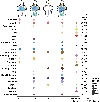
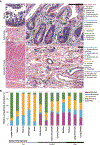
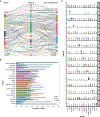
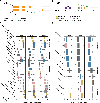
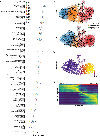

Comment in
-
Non-transplantable organs and tissues: A golden opportunity.Am J Transplant. 2022 Sep;22(9):2127-2128. doi: 10.1111/ajt.16671. Am J Transplant. 2022. PMID: 36039543 No abstract available.
-
Human cross-tissue cell atlases: unprecedented resources towards systematic understanding of physiology and diseases.Signal Transduct Target Ther. 2022 Oct 5;7(1):352. doi: 10.1038/s41392-022-01201-w. Signal Transduct Target Ther. 2022. PMID: 36198687 Free PMC article. No abstract available.
Similar articles
-
Single-cell transcriptomics of 20 mouse organs creates a Tabula Muris.Nature. 2018 Oct;562(7727):367-372. doi: 10.1038/s41586-018-0590-4. Epub 2018 Oct 3. Nature. 2018. PMID: 30283141 Free PMC article.
-
A single-cell transcriptomic atlas characterizes ageing tissues in the mouse.Nature. 2020 Jul;583(7817):590-595. doi: 10.1038/s41586-020-2496-1. Epub 2020 Jul 15. Nature. 2020. PMID: 32669714 Free PMC article.
-
Tabula Sapiens: An Atlas of Single-Cell Gene Expression.Am J Med Genet A. 2021 Oct;185(10):2857-2858. doi: 10.1002/ajmg.a.61700. Am J Med Genet A. 2021. PMID: 34523227 No abstract available.
-
Cell type ontologies of the Human Cell Atlas.Nat Cell Biol. 2021 Nov;23(11):1129-1135. doi: 10.1038/s41556-021-00787-7. Epub 2021 Nov 8. Nat Cell Biol. 2021. PMID: 34750578 Review.
-
Single-cell atlases: shared and tissue-specific cell types across human organs.Nat Rev Genet. 2022 Jul;23(7):395-410. doi: 10.1038/s41576-022-00449-w. Epub 2022 Feb 25. Nat Rev Genet. 2022. PMID: 35217821 Review.
Cited by
-
Recent advances in the field of single-cell proteomics.Transl Oncol. 2023 Jan;27:101556. doi: 10.1016/j.tranon.2022.101556. Epub 2022 Oct 19. Transl Oncol. 2023. PMID: 36270102 Free PMC article.
-
Evaluation of deep learning-based feature selection for single-cell RNA sequencing data analysis.Genome Biol. 2023 Nov 10;24(1):259. doi: 10.1186/s13059-023-03100-x. Genome Biol. 2023. PMID: 37950331 Free PMC article.
-
Regulation of endocrine cell alternative splicing revealed by single-cell RNA sequencing in type 2 diabetes pathogenesis.Commun Biol. 2024 Jun 27;7(1):778. doi: 10.1038/s42003-024-06475-0. Commun Biol. 2024. PMID: 38937540 Free PMC article.
-
Physical modeling of embryonic transcriptomes identifies collective modes of gene expression.bioRxiv [Preprint]. 2024 Aug 4:2024.07.26.605398. doi: 10.1101/2024.07.26.605398. bioRxiv. 2024. PMID: 39131269 Free PMC article. Preprint.
-
Multiorgan locked-state model of chronic diseases and systems pharmacology opportunities.Drug Discov Today. 2024 Jan;29(1):103825. doi: 10.1016/j.drudis.2023.103825. Epub 2023 Nov 13. Drug Discov Today. 2024. PMID: 37967790 Free PMC article. Review.
References
-
- Alberts B, Johnson A, Lewis J, Raff M, Roberts K, Walter P, Molecular Biology of the Cell (Garland Science, ed. 4, 2002).
MeSH terms
Associated data
Grants and funding
LinkOut - more resources
Full Text Sources
Other Literature Sources
Molecular Biology Databases

